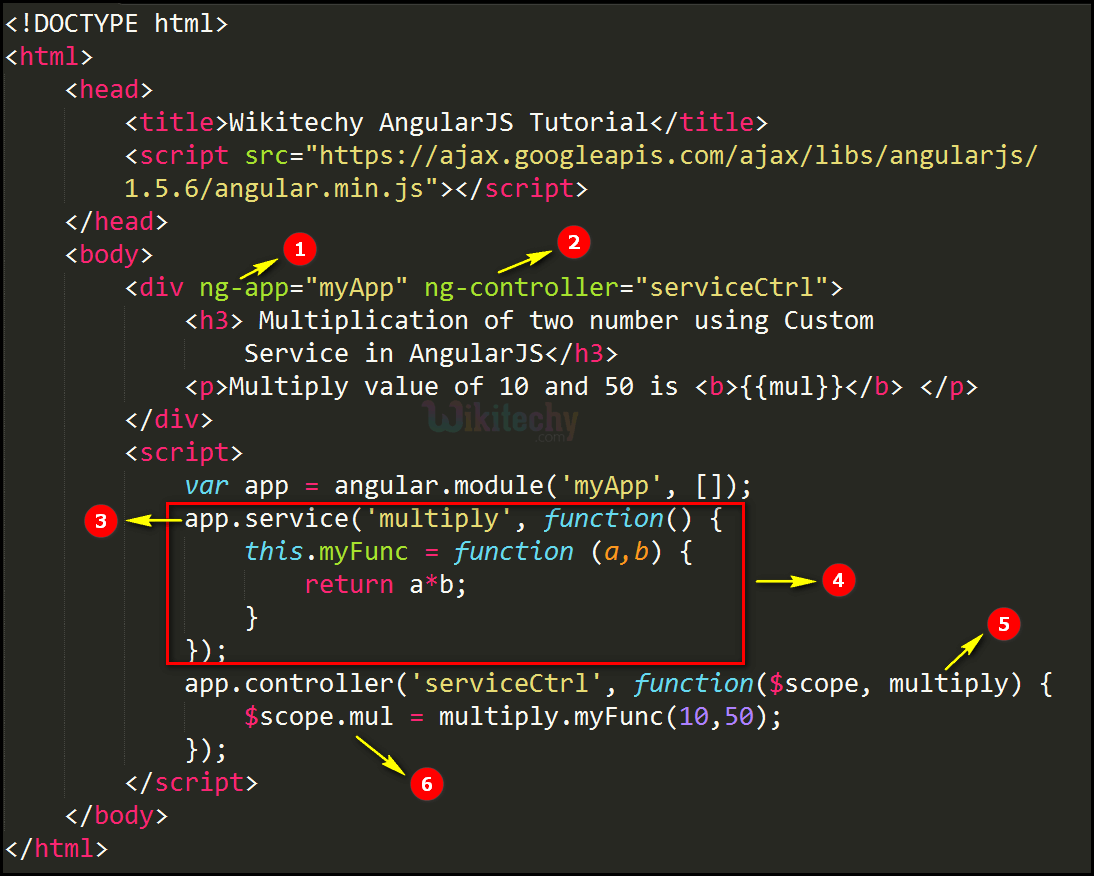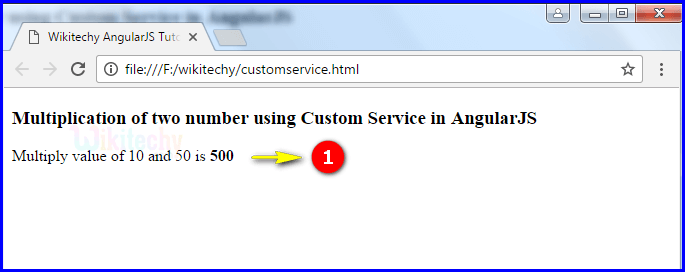| Services |
Description |
| $anchorScroll |
scrolls the element related to the specified hash or the current value of $location.hash(), according to the rules are specified in the HTML5 |
| $animate |
It is used to design a date for specified format The $animate service exposes a series of DOM utility methods that support for animation hooks. The default behavior is the application of DOM operations. When an animation is detected or enabled $animate will do the heavy lifting to ensure that animation runs with the triggered DOM operation. |
| $animateCss |
It is used to specify the core version of $animateCss. This service will actually performs the animations and ngAnimate is default one. |
| $cacheFactory |
It is used to constructs Cache objects and gives access to them. |
| $compile |
This service Compiles an HTML string or DOM into a template and produces a template function, which can be used to link scope and the template together.
|
| $controller |
$controller service is responsible for instantiating controllers. |
| $document |
A jQuery or jqLite element wrapper for the browser’s window.document object. |
| $exceptionHandler |
Several uncaught exception in angular expressions is delegated to the service. The default implementation is represented by $log.error which logs it into the browser console. |
| $filter |
It is used to formats the value of an expression and display to the user. |
| $http |
$http service is used to core Angular service that enables communication with the remote HTTP servers via the browser’s XMLHttpRequest object or JSONP |
| $httpBackend |
It is used to specify the service that delegates to XMLHttpRequest object or JSONP and it deals with the browser incompatibilities. |
| $httpParamSerializer |
It is used to converts objects to strings by default. |
| $httpParamSerializerJQLike |
Different $http params serializer follows jQuery param() method logic. The serializer will sort the params alphabetically. |
| $interpolate |
It is used to compiles a string with markup into an interpolation function. $interpolate services used by $compile service for data binding. |
| $interval |
It is used to specify the Angular’s wrapper for window.setInterval and the fn function is executed every delay milliseconds |
| $jsonpCallbacks |
This service handles the lifecycle of callback and the JSONP requests. Override this service to customize the callbacks and they are stored in requested url. |
| $locale |
It provides localization rules for various Angular components. |
| $location |
The $location service parses the URL in the browser address bar and makes the URL available to your application. Changes to the URL in the address bar are reflected into $location service and changes to $location are reflected into the browser address bar. |
| $log |
It is used for logging and default implementation is write the messages into the browser’s console |
| $parse |
It is used to Converts Angular expression into a function. |
| $q |
This services helps to run the functions asynchronously, and it can be use their return values (or exceptions) |
| $rootElement |
The root element of Angular application. ngApp was declared or the element passed into angular.bootstrap. |
| $rootScope |
Each application has a single root scope. All other scopes are descendant of the root scope. Normally, scopes provide separation between the model and the view. It is delivered the emission/broadcast and subscription facility. |
| $sce |
This service provides Strict Contextual Excaping services to AngularJS. |
| $sceDelegate |
It is used by the $sce service and it is provide Strict Contextual Escaping(SCE) services to AngularJS. |
| $templateCache |
It is loaded in the template cache for quick retrieval and it is also directly loaded into the cache in a script tag or by consuming the $templateCache service directly. |
| $templateRequest |
The $templateRequest service runs security checks then downloads the provided template using$http it can stores the contents inside of $templateCache. If the HTTP request fails or the response data of the HTTP request is empty, $compile error will be thrown .Note that the contents of $templateCache are trusted, so the call to $sce.getTrustedUrl (tpl) is omitted when tpl is of type string and $templateCache has the matching entry. |
| $timeout |
It is used to specify the Angular wrapper for window.setTimeout. The function is wrapped into a try/catch block and delegates any exceptions to $exceptionHandler service |
| $window |
It is reference to the brower’s window object and the window is globally available in JavaScript, it causes the testablility problems, because it is a global variable. In angular we always refer to the $window service, so it may be overridden, removed or mocked for testing. |
| $xhrFactory |
It is used to create XMLHttpRequest objects. |


